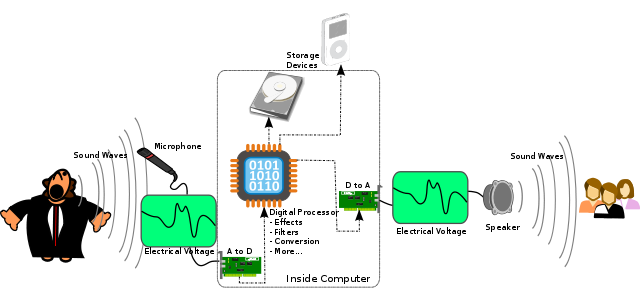Digital Audio Video Tutorials – 14 Hours
Here is a collection of over 14 hours of premium video tutorials on Digital Audio by Pluralsight. In order to view the videos, you need to become a member of Pluralsight.

Background: Digital Audio Digital audio involves manipulating sound in the following ways: record, store, generate, manipulate, and reproduce original sound. After the 1970’s, digital sound began to replace analog sound in many areas.
Here are the steps involved in digital audio. A microphone converts sound to an analog electrical signal. An analog-to-digital converter (ADC)—typically using pulse-code modulation—converts the analog signal into a digital signal. This digital signal can then be recorded, edited and modified using digital audio tools. A digital-to-analog converter is used to reverse the process, converting a digital signal back into an analog signal. Analog circuits amplify the analog signal and send it to a loudspeaker.
Digital audio systems include the following components: compression, storage, processing and transmission. Conversion to a digital format allows convenient manipulation, storage, transmission and retrieval of an audio signal. Digital audio can be used to produce any number of copies without degradation, which is different from analog audio which degrades more with each copy made.
Digital Audio
| Series | Title | Date | Presenter | Min |
|---|---|---|---|---|
| Getting Started with Audition | Getting Started with Audition | 11/8/2015 | Daryl Moorhouse | 139 |
| Beginner’s Guide to Pro Tools | Beginner’s Guide to Pro Tools | 8/5/2015 | Alex Solano | 138 |
| Audio Programming with NAudio | Audio Programming with NAudio | 11/4/2013 | Mark Heath | 420 |
| Digital Audio Fundamentals | Digital Audio Fundamentals | 7/25/2013 | Mark Heath | 169 |
| Total | 866 |
